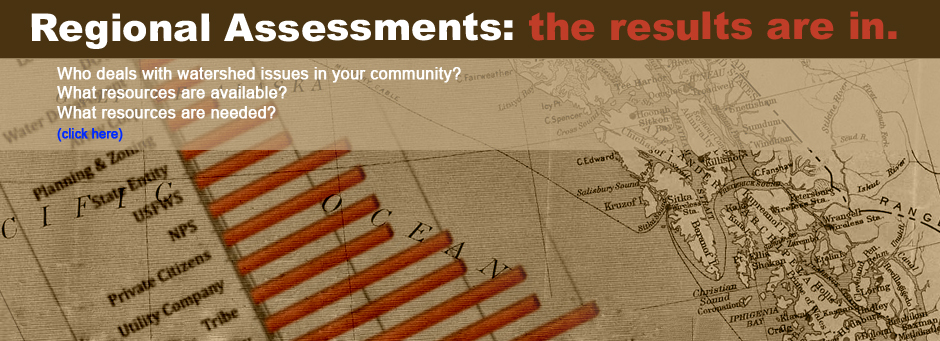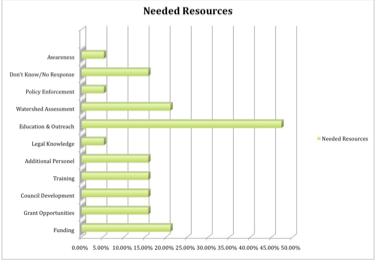 Watershed Assessments and Plans, Effective Adult Outreach and Education & Potential Funding Opportunities…
Watershed Assessments and Plans, Effective Adult Outreach and Education & Potential Funding Opportunities…
these are the top three resources community professionals reported they needed in order to be more effective at promoting, stewarding and sustainably developing their local watersheds
In 2011 SAWC conducted a Southeast Alaska regional assessment in order to understand better the resources local government employees, tribes and community-based non-profit organizations need to enhance their local watershed efforts.
[two_columns ]
Community-Based Needs Assessment of Watershed Management
Survey
Survey participants were selected based on their involvement with community and municipal organizations in Southeast Alaska and contact information was found through internet searches. Participants were asked three questions regarding community-based watershed management in their communities. These questions were as follows:
[list style=”arrow” color=”blue”]
- Who deals with watershed issues and management in your community?t
- What resources do you have available to deal with watershed issues and management in your community?
- What resources are needed in your community to increase community involvement in watershed management and decision making?
[/list]
Survey participants were primarily contacted by phone. Several participants were emailed the survey when a phone number was not available or incorrect, or if the participant requested the survey be emailed. Phone surveys had a more successful return rate, with around 75% of surveys completed of those called. To date, none of the email surveys were returned, including from those who requested the survey be emailed.
Results: Who deals with watershed issues in your community?
The primary entities that deal with watershed issues in communities in southeast Alaska (in :
[list style=”arrow” color=”blue”]
- Municipalities: Public works, planning and zoning, water department and utilities
- Federal Agencies: US Forest Service, National Parks Service, Fish and Game, Department of Environmental Conservation
- Nonprofit organizations and/or watershed councils
[/list]
The top three inhibitors to advancing watershed efforts in SE communities:
[list style=”arrow” color=”blue”]
- Additional Personnel
- No Local Watershed Councils
- Lack of Funding opportunities for local organizations/governments
[/list]
Results: What resources are available in your community to deal with watershed management?
Like with the first question, the local municipality was named the most frequently as a resource with over half of the surveyed participants citing the municipality or municipal code as a resource for watershed management. The U.S. Forest Service was again ranked second as an available resource. Other federal entities included U.S. Fish and Wildlife, and National Park Service. Third most frequently state were local watershed councils.
Results: What resources are needed in your community to increase community involvement in watershed management and decision making?
Education and outreach were clearly the most needed resources in communities with nearly half of all participants responding as such. Following outreach and education, funding and council development were the most frequently cited needs to increase community based watershed management. Other requests included water assessments, additional personnel and awareness of funding and grant opportunities.
[/two_columns]
[two_columns_last ]
[/two_columns_last]



